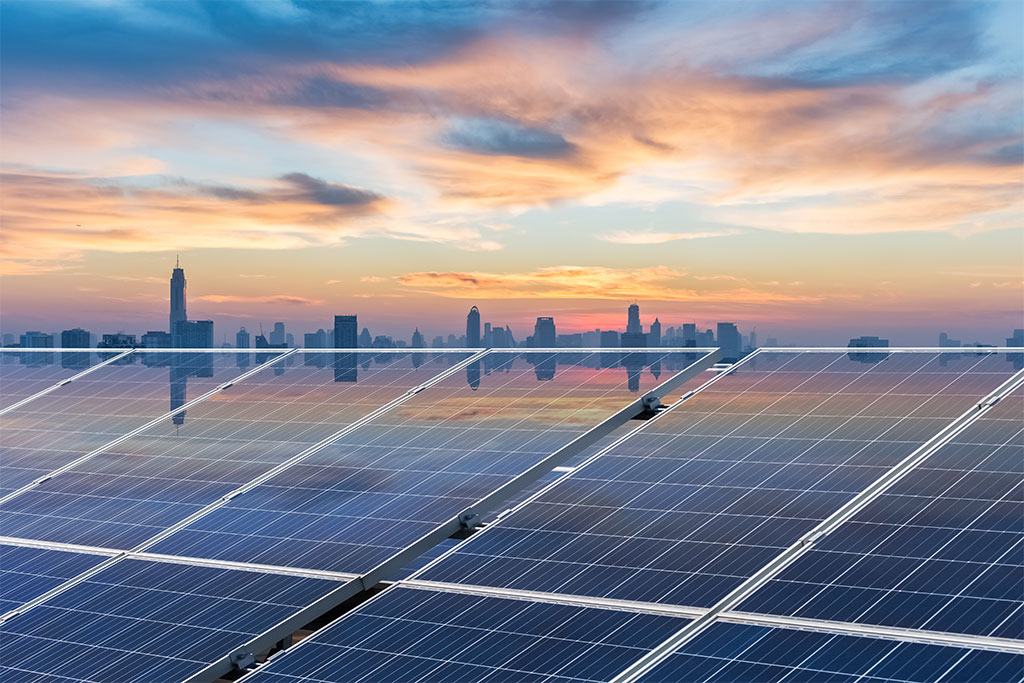India is home to more than a billion people with huge energy needs. But, when it comes to renewables, the country has set some ambitious targets over the next decade. Do you know ‘Indian renewable energy sector is the fourth most attractive renewable energy market in the world?’ And we feel proud of it! However, harnessing the energy present in nature to meet everyone’s demands is quite a challenge. Because, knowing the benefits of harnessing solar power is not enough. You need to know more about the ‘Solar Rooftop System’, its types and its respective functionality.
1. Types of solar rooftops:
Stand-alone solar rooftops:
These kinds of solar panels are not connected to the grid; instead, they work on diesel generator or batteries.
The solar power generated from the rooftop solar system charges the battery which is then used to power various applications. This system is suitable for a place that faces frequent power cut and breakdowns.
Grid-tied solar rooftops:
The on-grid system has slightly different functionality. In this case, the rooftop solar system is integrated with the main grid supply. This system allows power to be used from the grid supply only when the rooftop solar system is unable to supply the required power.
Related Read: Grid Connected Solar PV System: An Overview
Hybrid rooftops:
A hybrid solar system gives the advantages of both- grid-tied system and on-grid system. This system is connected to the grid as well as the batteries that store power. Hybrid solar solutions supply continuous power and are suitable for locations where the restricted power consumption is less than the generated energy.
2. Materials used in making solar panels?
Solar panels are usually made using key components like silicon, metal, and glass. And the standard panels are either made from monocrystalline or polycrystalline silicon.
3. Solar rooftops are eco-friendly:
While generating energy, the solar panels of the rooftop do not release any kind of harmful greenhouse gases; thus, marking them as a ‘green’ energy.
4. The cost:
Costing of a solar rooftop system completely depends on the size, type, location and quality of the product. The cost of 1kWp solar rooftop PV project could be around Rs.50,000 (including installation but excluding the cost of batteries).
Note: kWp stands for kilowatt ‘peak’ of a system. It is the peak power of a solar PV system.
5. Subsidy offered by the Government:
According to the Ministry of New and Renewable Energy, the Central Government pays 30% of the benchmarked installation cost for rooftop PV systems.
Other benefits offered by the government for installing a rooftop PV system:
In addition to the subsidy, people can avail various other benefits by installing a rooftop solar system:
- Those planning to install rooftop PV systems can avail priority sector loans of up to 10 lakhs from nationalized banks. This loan shall fall under the category of home loan or home improvement loan.
- Consumers will be eligible for generation-based incentives and will receive Rs. 2 per unit of electricity generated.
6. Net Metering
Net Metering is a system that gives solar energy owners credits for the power that they add to the grid. Sometimes solar panels might generate excess power. In this case, the surplus power is sent back to the grid for later use.
Related Read: What is Net Metering and How it Works?
Bottom Line:
Installing solar panels for electricity is always a great idea. The electricity you generate from solar energy is green and clean. Moreover, harnessing the power of solar decreases the carbon emissions, this ultimately reduces the dependency on the fossil fuels.
Contact us today to get a free solar panel installation quote or call us at +91 772-199-4477


